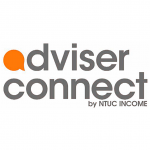(marketingmagazine.com.my)– By: Ron Graham

Anyone in marketing today is very aware of the impact of digital across all media channels. In tandem, there has been an explosion of available data and an increasing desire for more data about consumers, brands and marketing solutions.
Every part of the communications industry is being transformed. Advertising media is arguably the most disrupted part of the communications pie which is adjusting to digitisation and data.
One story which caught my eye recently was that Qantas Airlines now spends 70% of its marketing and communications budget on digital. (i) What was more compelling was the back-story, about the Qantas partnership with a data mining and analysis company, Red Planet.
The power of Data
This shows what a strong partnership between marketers and data researchers can do to empower really effective marketing, to specific, laser-targeted audiences with precise communications strategies.
The take-out of this is what does traditional advertising media need to do to remain relevant or be left fighting for a mere 30% of marketing budgets. The answer has to lie in better data, research and analysis of each medium’s pre and post-campaign measurement.

An example of OOH mapping systems (Source: Ayuda)
Consider DATA as an acronym for Data Analytics for Targeted Advertising. It starts with and is dependent upon data. Access to deep data which is sourced and shared, will help media partners deliver better services to the marketers however this is not always going to be available. Media owners have to take up the challenge to source, research and generate appropriate data. i.e. sufficient volumes of useful data for the task but avoiding confusion of too much or irrelevant data.
Getting the right insights
The next challenge is analysis and here media owners might need to seek 3rd party help or develop well-resourced in-house capabilities. Data on its own is not valuable unless we can interpret and apply insights from analysing the data.
With steps 1 &2 completed (and good client relationships), media companies can correctly target audiences or more appropriately, match their audiences with clients’ target audiences. Advertising media providers need to demonstrate justification for the allocation of marketing investment at pre-campaign stages, when competing against oth
er channels and need compelling ROI data to prove post-campaign performance. All media need to recognise and address the gap between traditional media ROI metrics and those provided by online and mobile channels.
Advertising, (or targeted advertising) is down to the content. For content to be targeted it is imperative to understand the strategy of what needs to be communicated and with what expected or desired outcome. Marketers and their content agencies are tasked to develop multiple content solutions for multiple interceptions in the consumer journey while having a holistic approach to deliver consistency to the consumer, regardless of the channel, format or environment.
Media owners have a role to consult and guide content creation most suited to the way audiences consume the media, nuances of the delivery format (ii) and the surrounding situation so that relevant messages are delivered in context to the viewer.
The fight to stay relevant
For out of home media (OOH), there are two distinct camps of traditional classic OOH and the digital dynamic OOH channels. The challenge for each is the same but the interpretation and implementation will be different.
Traditional OOH media is arguably the least equipped to meet the DATA challenge today, at least in Asia where OOH is less well supported with data and research than in North America, Europe or Australia. Digital OOH also has some limitation on audience data but has advantages on analytics and targeting.

A snapshot of Australia’s diverse and data driven, digital media trading ecosystem (Source: MediaScope)
The OOH industry needs to accelerate its capabilities in order to stay relevant and competitive and quite frankly, survive. In more sophisticated markets the out of home sector has invested heavily in data, research, analytics and insights, in order to demonstrate OOH relevance and value. Outdoor mass exposure possibilities provide scale to enhance one-to- one online and mobile communication.
The ability for digital outdoor to react and respond directly with audiences and involve consumers creates unique engagement possibilities and activation strategies. Digital OOH is now broadcasting campaigns across networks of screens, with the flexibility to select most relevant times and to change campaign content in real time based on factors such as the weather, news or sports results.
The tools exist to generate deep data about OOH media audiences, locations and situations. It is time to invest in those tools, research and analysis to compete more aggressively for a (deserved) larger share of marketing budgets. Armed with data and insights, the OOH media owners can offer and deliver, highly targeted and effective communication.

Location data for a Digital OOH Campaign
This may all seem rather obvious and bodes the question what is preventing or limiting investment in data and research by OOH media companies. The lack of investment is partly due to fragmented supply chain wit
h too many owners, without focus or long-term commitment to make the necessary investments. This obstacle is being removed slowly by ongoing consolidation, aggregation and other concentration of interests such as the OOH specialist media buying agencies like Kinetic and Posterscope.
Consolidation – in whatever form – is a necessity to source, create and analyse data about audiences and locations, so that OOH advertising can be made with precision. If consolidation is the solution, then the remaining concern is duplication. As media agencies, specialists, media owners and 3rd party service providers invest in the platforms and data to improve OOH media planning and buying there is a huge amount of duplication of effort and investment.
There is something of a land-grab taking place, in a race to be the first or best to own and offer data. Investment in data and research adds value and that value needs to be recouped. Duplication will severely reduce prospects to recover investments and actually adds fragmentation in place of consolidation.
It is time for OOH media in Asia to catch up with other markets where OOH not only demonstrates its own ROI but enhances the results of online and mobile campaigns. Investment is the answer but it would appear collaboration is essential to create consolidation while avoiding duplication, to optimise data and research ROI.
Ron is an industry veteran with over 30-years’ experience in Out of Home media, and he is widely known for his independent and objective point of view and a collaborative approach to industry issues. Ron is currently living in Malaysia and working throughout the ASEAN region.

Is your company at your clients’ fingertips?
On the table of Malaysia’s leading marketing, media and agency heads will be a well-worn book, an industry bible which has been bookmarked, highlighted and even had its pages torn out.
Launched 22 years ago, the annual Malaysian Advertising Directory or MAD is the premier resource for every marketing, media and agency head in the country.
We are open for bookings for MAD 2017 and it’s time for YOUR company to be right at the fingertips of your clients. 8,000 copies sent to marketers, media specialists, brand agencies, digital players and more…
Download the PDF on MAD here
To advertise email [email protected] or call 018-220 0682
MARKETING Magazine is not responsible for the content of external sites.









